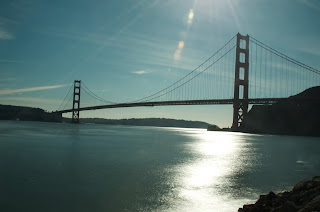Here is one of my first. Thought I would try at 5 minutes intervals but it ended up being too long.
Next was at 1 minute. This worked much better for things like clouds which you can see here, but for the tide, it did not work well. I ended up slowing the frame rate down for the tide to see if that helped. You can see the difference in the second tide shot.
Technical, all shots used my D7000 in manual mode. Autofocus and exposure were turned off. This is the only way to make sure that the camera does not change focus during the shoot. (Obviously this is all done on a sturdy tripod.)
Basically set your exposure via the camera at first, then turn everything off aka fully manual and set the iso, shutter speed and f stop to the exposure that was recorded when they where on. Place on a tripod and set up the interval wanted. Here the D7000 has an ability to do this in camera. I set 1 sec, for 900 shots and let it go. I read on the web and concur that shooting jpgs at this point is good enough. Shooting raw will just be a waste and can run into storage and/or recording problems if the camera can take pictures faster than it can save to the storage media.
So the first picture was at 5 secs per shot and played back at 30 frames per sec and about 500 shots. The other shots where 1 sec intervals and play back is at 30 frames. And as stated above the second tide was 10 frames per sec. Around 500 shots for the clouds and 900 for the tide.
Here is the moon raising. This was a little different in that I tried a bit of long exposure. The shots are each 20" long and 1 minute intervals. The playback is 10 frames per sec. This is just a 20 shot sequence.
I found a neat little program in the Apple App store for free that puts the jpgs together and creates either mp4 or mov files. The name is Zeitraffer and all these have been stitched using it.
All in all, interesting and fun.



